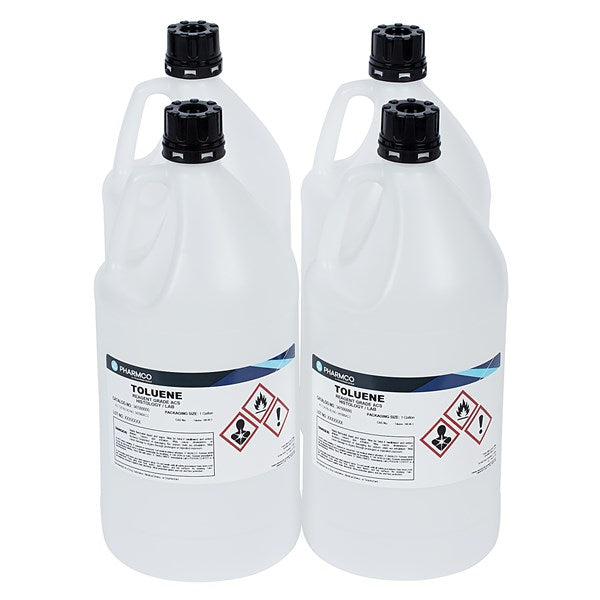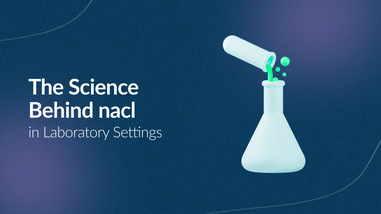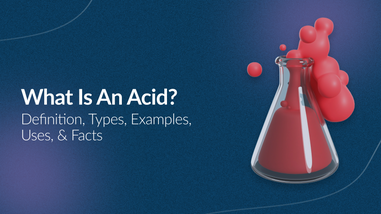- No products in the cart.
In the vast landscape of analytical chemistry, certain solvents emerge as unsung heroes, playing pivotal roles in techniques that unravel the mysteries of molecular composition. Toluene, a colorless liquid with a distinctive sweet smell, takes center stage in this exploration. Beyond its everyday applications, toluene proves to be a window to analytical insight, particularly in the realms of gas chromatography (GC) and liquid chromatography (LC).
Toluene as a Calibration Standard
Calibration standards are essential for ensuring the accuracy and precision of quantitative analytical measurements. Toluene is a popular calibration standard in GC and LC due to its high purity, stability, and ease of detection.
Toluene in Gas Chromatography:
Gas chromatography stands as a cornerstone technique in analytical chemistry, allowing for the separation and analysis of volatile compounds. Toluene's volatility and favorable chemical properties make it an ideal candidate as a calibration standard in GC. Its well-defined retention time and known behavior aid in the precise calibration of chromatographic systems, ensuring accurate identification and quantification of target analytes.
Moreover, toluene serves as an excellent solvent for sample preparation in gas chromatography. Its ability to dissolve a wide range of compounds facilitates the creation of homogeneous sample solutions, ensuring uniform distribution across the chromatographic column. This critical role in sample preparation enhances the accuracy and reproducibility of GC analyses.
Toluene in Liquid Chromatography:
Liquid chromatography, another powerful tool in analytical chemistry, relies on the differential affinity of compounds for a stationary phase. Toluene's unique interactions with various stationary phases make it an intriguing subject of study in liquid chromatography.
The aromatic nature of toluene allows for π-π interactions with aromatic stationary phases, influencing the separation of compounds. The exploration of these interactions provides valuable insights into the selectivity and retention mechanisms of liquid chromatography columns. Researchers delve into the nuances of toluene's behavior to optimize separation conditions for complex mixtures, contributing to the refinement of liquid chromatography methodologies.

Toluene as a Solvent
Toluene is a versatile solvent used in a variety of analytical applications, including sample preparation and extraction. Toluene is a good solvent for dissolving a wide range of organic compounds, making it ideal for sample preparation. It is also a good solvent for extracting organic compounds from aqueous solutions.
In GC, toluene is often used to dissolve samples before they are injected into the column. This ensures that the sample is in a homogeneous state and that all of the components are vaporized.
In LC, toluene is often used to extract organic compounds from aqueous samples. This involves shaking the aqueous sample with toluene to allow the organic compounds to dissolve in the toluene. The toluene layer is then separated from the aqueous layer and analyzed by LC.
Toluene's Interactions with Stationary Phases
Toluene's interactions with stationary phases in GC and LC offer valuable insights into separation science. The stationary phase is the material that the sample interacts with as it elutes from the column.
In GC, the stationary phase is typically a liquid film coated on the inside of the column. Toluene interacts with the stationary phase through van der Waals forces. Van der Waals forces are weak attractive forces between molecules. The strength of the van der Waals forces depends on the polarity of the molecules involved.
Toluene is a non-polar molecule, so it interacts weakly with non-polar stationary phases. This means that toluene elutes from a non-polar GC column relatively quickly.
In LC, the stationary phase is typically a solid packing material. Toluene interacts with the stationary phase through normal-phase and reversed-phase interactions.
Normal-phase LC is a type of chromatography where the stationary phase is more polar than the mobile phase. The mobile phase is the solvent that carries the sample through the column. Toluene is a non-polar molecule, so it interacts strongly with polar stationary phases in normal-phase LC. This means that toluene elutes from a normal-phase LC column relatively slowly.
Reversed-phase LC is a type of chromatography where the stationary phase is less polar than the mobile phase. Toluene is a non-polar molecule, so it interacts weakly with non-polar stationary phases in reversed-phase LC. This means that toluene elutes from a reversed-phase LC column relatively quickly.
Conclusion:
In the intricate world of analytical chemistry, toluene emerges as a versatile ally, offering a window to analytical insight that extends beyond the realms of chromatography. Its role in gas and liquid chromatography, coupled with its diverse applications in sample preparation and spectroscopy, showcases the multifaceted nature of this solvent. As we delve deeper into the complexities of molecular analysis, toluene stands as a testament to the invaluable contributions of seemingly ordinary substances in unraveling the secrets of the microscopic world.
For over 40 years, Lab Pro Inc. has been committed to delivering highest quality lab chemicals, lab supplies, hand tools, lab equipment, reagents, distance learning kits, and cleanroom PPE apparel. Renowned by global medical device companies and laboratories, we ensure exceptional quality in every product. Contact us online or call 888-452-2776 to learn more. Discover top-notch lab supplies and elevate your experiments today!












































